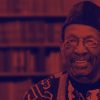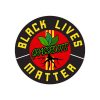“Our community must reinforce its moral responsibility to rid itself of the effects of years of exploitation, neglect, and apathy, and wage an unrelenting struggle against police brutality.”
– Malcolm X Speech at the Founding Rally of the Organization of Afro-American Unity (June 28, 1964)
Radical change in America has always been an especially difficult and a particularly violent undertaking.
Without even considering extermination of Native Americans and enslavement of millions of Africans that marred the very origins of our country’s development, the simple democratic right to form labor unions was met with murderous assaults by police, National Guard troops and company-paid Pinkerton’s throughout the 19th and early 20th centuries.
This was quite different from Europe, where trade unions and even mass socialist parties were formed in the same era with nary a drop of blood spilled.
Fast forward to the modern civil rights movement against Jim Crow when church burnings, police assaults, assassinations and methodical government and FBI COINTELPRO harassment took place, and we must conclude that not much had changed.
More recently, during the Occupy Wall Street protests, there were numerous episodes of police gassing and clubbing of peaceful demonstrators and violent dispersing of legal encampments. Today, as well, the aggressiveness of police and their militarized tactics has only been tempered by the international outrage it ignited.
So, for sure, every social protest movement must be politically and organizationally prepared when challenging the entrenched status quo.
It is in that spirit that this article takes a look back to the Occupy Wall Street actions and takes a look way back to the anti-Vietnam War protests.
Both deeply impacted international consciousness but both also offered somewhat contrasting examples of how to build a movement. I believe militant activists of the new anti-racist movement will benefit from taking a closer look at our past struggles to see what worked and what didn’t.
Occupy Example
The actions of Occupy Wall Street in a matter of months had an immediate and resounding impact that shook the world. We saw how rapidly people acquire political consciousness when acting together to change their social situation.
Almost overnight, blame shifted away from individual homeowners, victimized by sub-prime risky mortgages, to the sleazy banks who engaged in incredibly manipulative and enormously profitable bundling of these high-yield junk bonds.
The slogan 1% vs. 99% thus entered the popular lexicon. Putting the responsibility for the crisis on institutions rather than individuals is a huge political achievement. It improves the likelihood of making important structural reforms.
The Black Lives Matter movement is taking on this exact same dynamic.
Protests all across this country are now demanding an honest examination of the built-in biases of the criminal injustice system. In that sense, much can be learned from the Occupy Movement’s exposure of the rigged financial system.
As part of this examination, however, it must be recognized that Occupy had a significant flaw that limited its potential.
Most problematic is that it made a virtue of being leaderless, believing it would operate better with dedicated, unelected volunteers. In the same vein, its decisions were based on consensus.
Contrary to the best of intentions, both are actually extremely undemocratic ways to function.
For example, sensing pressure to reach consensus, some actually keep silent to maintain a false sense of political unity, leading some good activists to forgo debate and to go along with things they might otherwise disagree because they want to maintain a spirit of solidarity. At other times, a few individuals can flat-out block reaching consensus and force things to be reformulated until it suits them, a persistence that mostly benefits men.
This politically infantile approach of not voting, of not electing a leadership accountable to the movement and of not proposing any “leadership-inspired” national coordination goes unnoticed at first while the movement is growing.
But, at the first sign of the inevitable and well-organized counter attack by the corporate establishment with their cops and government in tow, everything falls apart with each local Occupy left to fend for themselves.
That is exactly what happened to the disparate Occupy Movement which, nonetheless, left an enduring political footprint for us to follow.
Better Organized, Bigger Actions
Just think how much more the Occupy Movement would have accomplished had there been national coordination and support for each local Occupy group.
In this regard, the mass movement against the Vietnam War offers a contrasting and successful example. The movement started very small in the early-1960s with a loose assortment of radicals, peace activists, pacifists and students.
The country was overwhelming pro-war, so there was no powerful or reputable national organization on our side that would serve as our anchor.
The situation was much like what we see today where grassroots support against police brutality exists without any credible national organization having the authority to pull it all together.
The student antiwar movement solution was to get itself organized, very well organized, by holding periodic national conferences that were democratic and open to everyone who was against the war. Conferences maintained broad unity by focusing on Vietnam’s right to self-determination, declining to come up with a full program to solve all our social problems where there were a variety of opinions.
One of these conferences in 1969, I recall, drew 5000 organizers to Cleveland’s Case Western Reserve University where we voted to support two major nationally coordinated protests within a month of each other.
One was a series of local actions in hundreds of cities and one was the enormously successful first National Moratorium held in Washington DC that attracted over 600,000.
Assembling thousands of organizers from across the country to discuss an action agenda was instrumental in maintaining a united national movement and keeping momentum going against persistent pro-war government propaganda and FBI COINTELPRO and police provocations.
Ultimately, these actions swung majority sentiment against the war. In fact, the organized movement’s impact on the war-weary population lasted for years.
Politicians continually complained in the following decade about what they termed the “Vietnam Syndrome” for limiting the government’s ability to militarily intervene abroad…exactly.
History reveals time and again that reform movements achieve their goals more effectively when they improve their level of organization.
Go National
The Ferguson and New York anti-racist movements have earned great authority with Black Lives Matter making very good efforts to keep the movement going.
This is important because regularly demonstrating locally inevitably tends to exhaust activists if they do not feel a direct connection to a larger national movement.
Therefore, I hope they go even further to project themselves forward nationally, along with other allies they identify, by calling a national conference where activists can collectively discuss the main justice issues and where nationally coordinated actions can be announced.
This would be an opportunity to pool the strength of local movements and attract allies from the community, religious groups and other working-class movements like unions, the Fight for $15 and Our Walmart.
Otherwise, more established and more conservative forces will continue to insert themselves as leaders and bypass the new movement which essentially is more grass roots, more youthful and more militant than anything since the great Civil Rights Movement.
Learning from the past, we can say with confidence that if the level of organization and coordination matches the commitment and devotion of this new generation, the struggle will surely carry to the next level.
Carl Finamore was chair of the Univ. of Ill. (Chicago) campus antiwar committee and of the Chicago City-Wide Strike Committee that coordinated campus shutdowns and a protest of 50,000 in response to the 1970 killings at Kent State and Jackson State. After leaving Chicago, he was an organizer for antiwar coalitions in New York City and Los Angeles until the war’s end.














